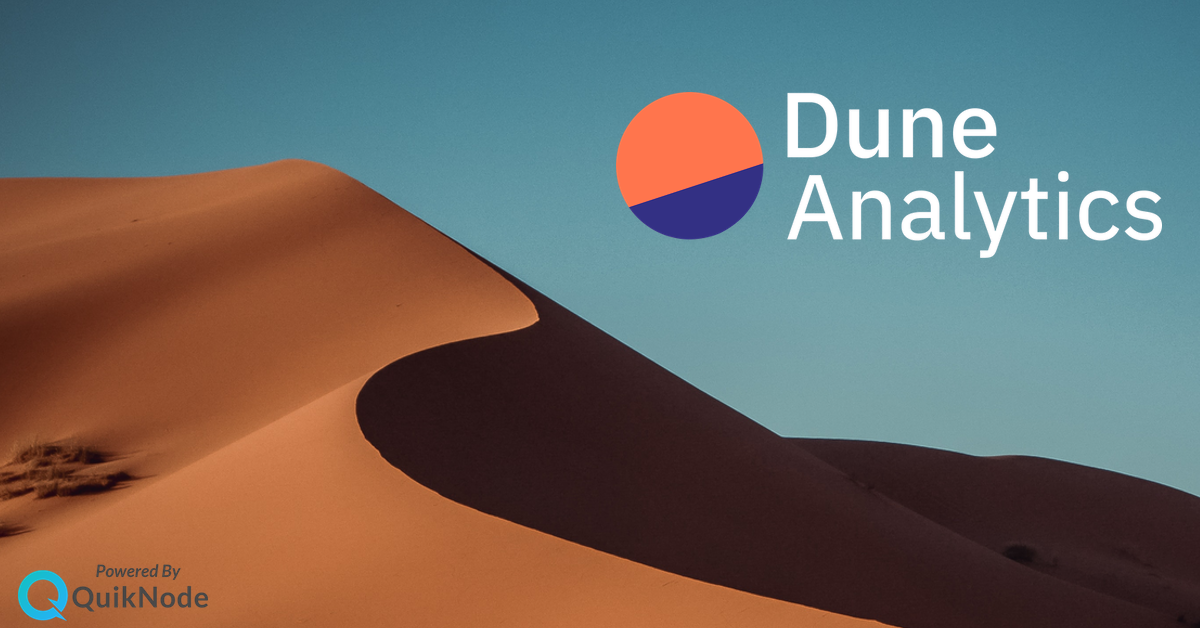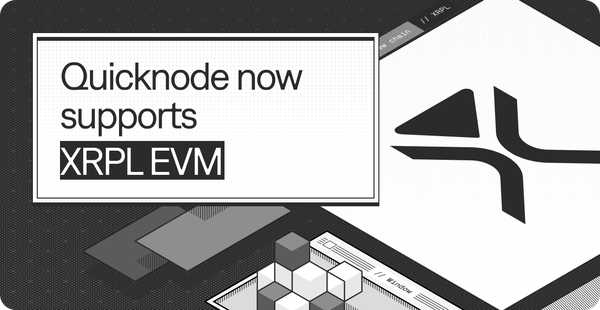Dune Analytics: Freeing Bandwidth & Money to Level Up
"I logged on to Quicknode, entered my credit card details and changed the URL in our kubernetes config map and everything worked. Out of the box. No further configuration. No custom code."

Without the right data, it's like making huge decisions in the dark
Before Dune Analytics set it off in 2018, there was no easy way to answer any arbitrary questions about Ethereum activity with data, or look back to see how that data moved over time. Sure, there were a few sites that reported some specific metrics. But not with transparency and the flexibility to interact with the metrics and data provided. In that framework, it's hard to benchmark metrics across different dApps in a meaningful way. Without the right data, community discussions and product decisions are often based on apples & oranges comparisons, or made without ever considering data.
Dune Analytics solves the problem with flexible, interactive and transparent data
Dune Analytics offers the Ethereum community Ethereum data with SQL, where you can visualize the results and share it with the world in a matter of minutes. You can create your own dashboard full of beautiful visual graphs within a plug and play experience. Dune Analytics provides all the smart contract events, contract calls, and Ethereum transactions in real-time. They also have token/USD prices you can easily join with to get USD volumes of on-chain activity.
Beyond the data and tooling, it's easy to explore all the other great analyses that fellow community members have created with Dune. If you get inspired you can simply fork the query with a click to make it your own. Wondering what is actually going on is now a thing of the past.
Corrupted disk, various memory leaks and bugs
An innovation like Dune requires serious infrastructure and a multitude of problems to solve. They opened up shop while maintaining their own Archive Node and ran into major resource drain, headaches, and bad sleep.
Co-Founder Mats Julian Olsen breaks down how QuickNode came to the rescue:
“Dune was previously self hosting Parity archive nodes. We had been struggling for a while with various memory leaks and other bugs that seemed to get no attention or prioritization. One day I woke up to an alarm from our last node. It had corrupted its disk overnight because it had run out of space on its ~ 4TB drive. At this point I had to recreate our VMs from a snapshot from a few days before, but this was a somewhat manual process and would take several hours to get online.
In the back of my mind I knew node providers such as Infura, Alchemy, and QuickNode existed, but we had never really used them. I read the Infura docs but they did not offer tracing at the time. I then contacted Alchemy who we had been in touch with previously, but they were not self-serve at the time and this was in the middle of the night in the US. Then I logged on to QuickNode, entered my credit card details and changed the URL in our kubernetes config map and everything worked. Out of the box. No further configuration. No custom code. And we literally went from spending $1000/mo in credits maintaining our archive node, to spending $35/mo at QuickNode.”
There is so much innovation and value with Dune Analytics, plus it is free for everyone--forever. If you want extra features like private queries, the option to export your results and more, check out their Pro plan.
Check in with Dune Analytics on Twitter @DuneAnalytics.
Need help with your project or have questions? Contact us via this form, on Twitter @QuickNode, or ping us on Discord!
About QuickNode
QuickNode is building infrastructure to support the future of Web3. Since 2017, we’ve worked with hundreds of developers and companies, helping scale dApps and providing high-performance access to 16+ blockchains. Subscribe to our newsletter for more content like this and stay in the loop with what’s happening in Web3! 😃





